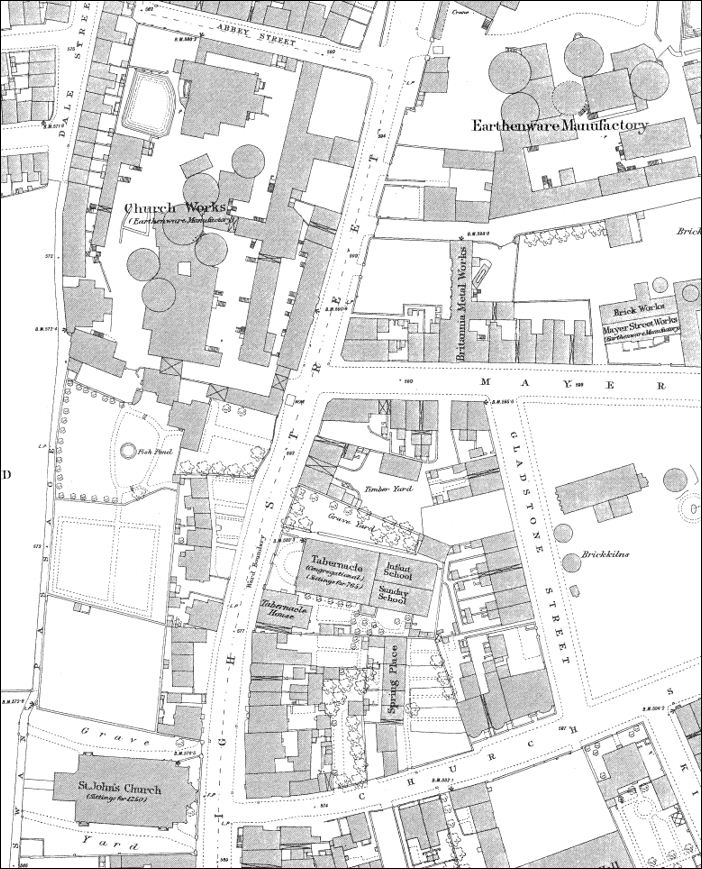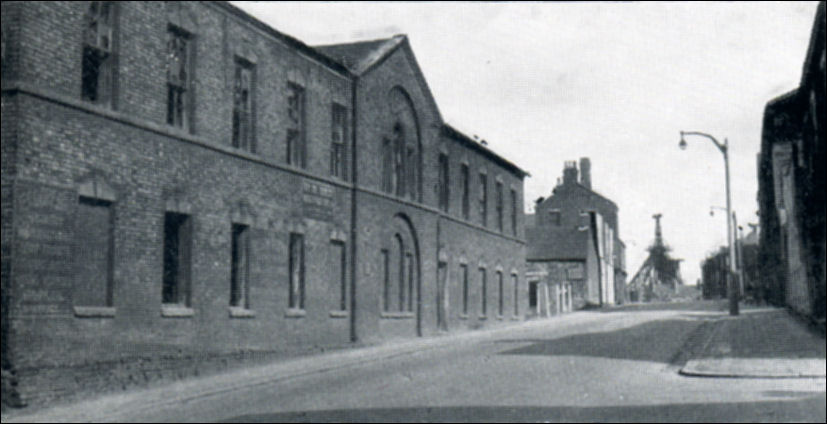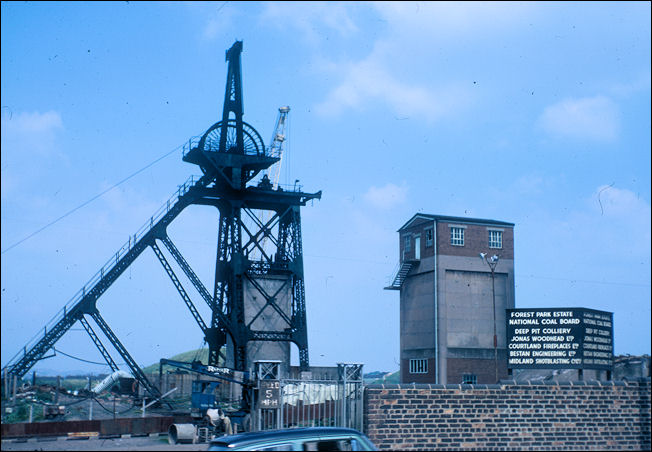![]()
|
|
|
|
|
Stoke-on-Trent - Potworks of the week |
Advert of the Week
Photo of the Week
Church Works, Hanley
The Church works was so named because of its proximity to the Church of St. John the Evangelist on the High Street, Hanley, Stoke-on-Trent.
A summary of the occupiers of the works:-
NOTE: as always these dates are approximate, there is overlap with some of the businesses - especially at the time of Ridgway and his son
when the partners were in business together in more than one company.
The details given in brown text are from Jewitt's - Ceramic Art of Great Britian
The details given in blue text are from Mankowitz & Haggar, Encyclopedia of English Porcelain
| Humphrey Palmer | c.1760-79 | "Palmer was a rival and imitator of Wedgwood from about 1760. Financial difficulties caused his failure in 1778 and the business was subsequently carried on with the help of J.Neale" |
| Neale & Palmer | c.1769-78 | |
| James Neale & Co. | c.1776-86 | "James Neale, who had been Humphrey Palmer's London agent, took over Palmer's business Hanley after his failure in 1778." |
| Neale & Wilson | c.1784-95 | "Robert Wilson was made a partner in 1786 and for a time firm was known as Neale & Wilson. The style Neale & Co. seems to have been adopted when other partners were admitted." |
| Robert Wilson | 1795-1801 | "Robert
Wilson, the successor to Neale & Wilson, devoted himself
mainly to the production of cream-coloured earthenware, plain
or decorated in the Wedgwood manner." "Robert Willson succeeded Neale, and when he died in 1801 was in turn followed by David Wilson" |
| David Wilson (& Sons) | 1801-c.1818 | David Wilson
& his son Daniel "After the death of Robert Wilson, his brother David carried on the works from 1802 until 1815." "It was afterwards D. Wilson & Sons; then Assignees of Wilson." "David Wilson who took his sons into partnership and traded as David Wilson & Sons. David Wilson and the sons who were in the business, except John, had died before 1817 when John Wilson became bankrupt and the factory passed to other hands." |
| Phillips & Thompson (?) | c.1818/9 | |
| Phillips & Bagster | c.1820-23 | "Phillips & Bagster (c.1820-33). The Phillips of this firm was Jacob, brother to Jonathan Phillips, the retailer of Oxford Street, London. |
| John Denton Bagster | 1823-28 | |
| Joseph Mayer | 1831-33 | The manufactory and house adjoining, where
Bagster had resided, came on to the market and were purchased
by Joseph Mayer, son of and successor to Elijah Mayer." From c.1822 Joseph Mayer continued the business of his father, Elijah Mayer, at the Cobden Works which was on the opposite side of the High Street as the Church Works. Around 1831 he purchased the Church Works, which he operated from for a few years and then leased out to William Ridgway. |
| William Ridgway (& Co) | 1830-54 | "The Church Works were then, in about 1832, rented by William Ridgway & Co., Mr. Ridgway being Joseph Mayer's cousin. Joseph Mayer had in his employ a clever modeller, Leonard James Abington, who was also a chemist, and he placed him in partnership with William Ridgway, thus making the '& Co'." |
| William Ridgway, Son & Co | 1841-48 | Edward John
(James) Ridgway was the son. L J Abington was the '& Co' "...the next addition to the firm, as soon as he was old enough to enter it, was William Ridgway's son Edward John, the title of the firm being changed to William Ridgway, Son & Co." |
| E Ridgway & Abington | 1835-60 | Edward J
Ridgway and Leonard James Abington were the partners. "In course of time, William Ridgway retiring, the two manufactories were carried on by Edward John Ridgway and L. J. Abington. The firm was styled Ridgway & Abington during the 1848-60 period. It was ultimately Edward John Ridgway alone" |
| E J Ridgway (& Son) | 1860-66 | In 1866 E J Ridgway relocated to the newly built Bedford Works in Shelton. |
| Powell & Bishop | 1866-78 |
"from 1866 to 1878, it was Powell & Bishop. In 1878, this firm became Powell, Bishop & Stonier, which in 1891 became Bishop & Stonier - a well-known twentieth-century firm. Powell & Bishop and the associed subsequent partnership also operated from other addresses in the area. |
| Powell, Bishop & Stonier | 1878-91 | |
| Bishop & Stonier | 1891- | Bishop & Stonier were recorded as still at these works in 1914. |
| The 1925 OS
map shows the Church Works still standing but records it as
'disused'
The works were "demolished c.1948, and by 1959 the site was occupied partly by the King George VI Memorial Club and an Auxiliary Fire Service office, the remainder being used as a car park."
|

1880 map showing the Church
Works (top left) and
the Cobden Works (top right)

Church Works, Hanley
The remains of the famous Neal and
Wilsons manufactory in the High Street (now Town Road), Hanley
in the background can be seen the pithead gear of Hanley Deep Pit
faded writing
on the wall in the centre of the building reads:
"Willow Pottery Churchworks"
photo: Aug 1951 Warrillow Collections

the remains of the
pithead gear at Hanley Deep Pit
[now demolished]
Deep Pit got its name from the fact that it had the area's deepest shaft, reaching 1,500 feet


the Church Works clearly seen on
the 1898 map is now lost under the new roads
Over 100
years separates these two maps - but key features can still be found
on both maps
The blue line shows
the original route of the High Street (renamed Town Road in the
early 1950's)
The purple line shows the
approximate route of the redirected road when the Potteries Way was
built.
Marked in green are roads which
can be found on both maps:
on the left: Union Street at the top and Lamb Street at the bottom.
on the right: Mayer Street, Hillchurch Street (was Church
Street),
Glass Street and Huntbach Street (was Market Street)
In red are marked the National
Westminster Bank (was the Manchester and Liverpool District Banking
Company)
and a chapel, which later became a Spiritualist Church.
The blue boxes show St. John's
Church on the left and
on the right the Upper Hanley pottery and Weatherby's
|
|
Humphrey Palmer at the Church Works, Hanley
Artists employed by Palmer
Work and Subjects Palmer's work was mainly in imitation of that of Wedgwood (a court case arising at one time over his infringement of Wedgwood's patents). It was of excellent quality: Wedgwood himself remarked of it in a letter to a friend, 'The body is very good, the shape and composition very well' Black basaltes decorated with reliefs were the first wares imitated by Palmer, evidently with some success. Agate vases, jasper seals and medallions, red wares with lathe-made patterns were copied at a later date. Mrs Palmer took an active part in the management of her husband's business. She ordered new wares from Wedgwood for copying as soon as they were delivered to the London warehouse.
James Neale (b. 1740 d. 1814) at the Church Works, Hanley James Neale, who had been Humphrey Palmer's London agent, took over Palmer's business Hanley after his failure in 1778. Dates and Owners Robert Wilson was made a partner in 1786 and for a time firm was known as Neale & Wilson. The style Neale & Co. seems to have been adopted when other partners were admitted. Robert Willson succeeded Neale, and when he died in 1801 was in turn followed by David Wilson who took his sons into partnership and traded as David Wilson & Sons. David Wilson and the sons who were in the business, except John, had died before 1817 when John Wilson became bankrupt and the factory passed to other hands. Work and Subjects The firm made good quality cream-coloured wares, blue-painted and lustred table ware, jasper, black Egyptian, marbled vases etc. many pieces in close imitation of Wedgwood. Designs from Wedgwood were not infrequently copied, and classical shapes and decoration figured largely in work from the pottery. Figures made by Neale & Co. are often of considerable merit. Usually small in size, they are modelled, and coloured in a neat restrained manner (a turquoise blue is notable for its frequent use) in fine, clear enamels. The figures were generally made for easy delivery from moulds, and were sometimes gilded in a porcelain style. Mankowitz & Haggar, Encyclopedia of English Porcelain
A copy of Wedgwood's Portland Vase -
impressed mark "NEALE & Co" - |